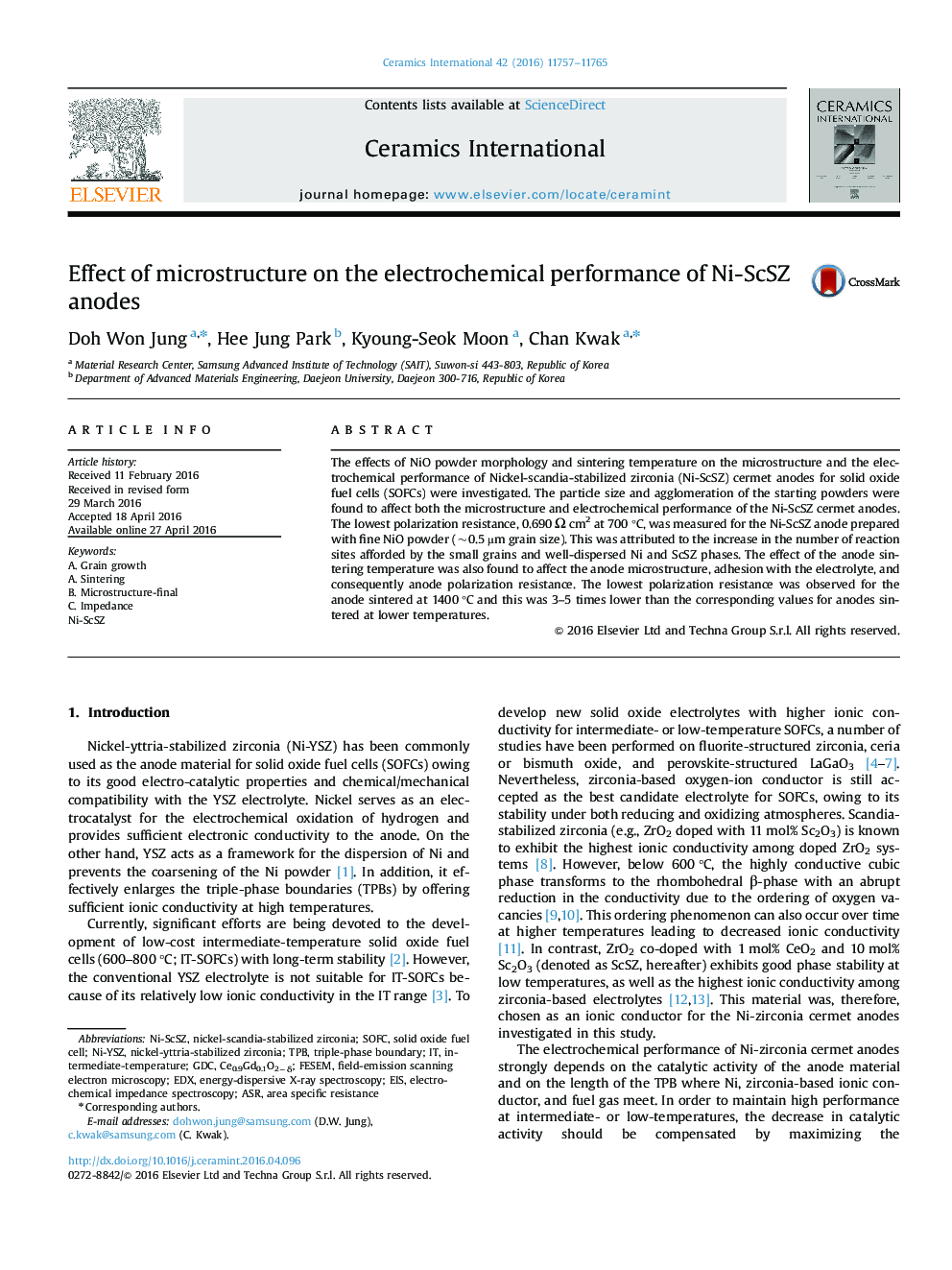| Article ID | Journal | Published Year | Pages | File Type |
|---|---|---|---|---|
| 1458824 | Ceramics International | 2016 | 9 Pages |
The effects of NiO powder morphology and sintering temperature on the microstructure and the electrochemical performance of Nickel-scandia-stabilized zirconia (Ni-ScSZ) cermet anodes for solid oxide fuel cells (SOFCs) were investigated. The particle size and agglomeration of the starting powders were found to affect both the microstructure and electrochemical performance of the Ni-ScSZ cermet anodes. The lowest polarization resistance, 0.690 Ω cm2 at 700 °C, was measured for the Ni-ScSZ anode prepared with fine NiO powder (~0.5 µm grain size). This was attributed to the increase in the number of reaction sites afforded by the small grains and well-dispersed Ni and ScSZ phases. The effect of the anode sintering temperature was also found to affect the anode microstructure, adhesion with the electrolyte, and consequently anode polarization resistance. The lowest polarization resistance was observed for the anode sintered at 1400 °C and this was 3–5 times lower than the corresponding values for anodes sintered at lower temperatures.
